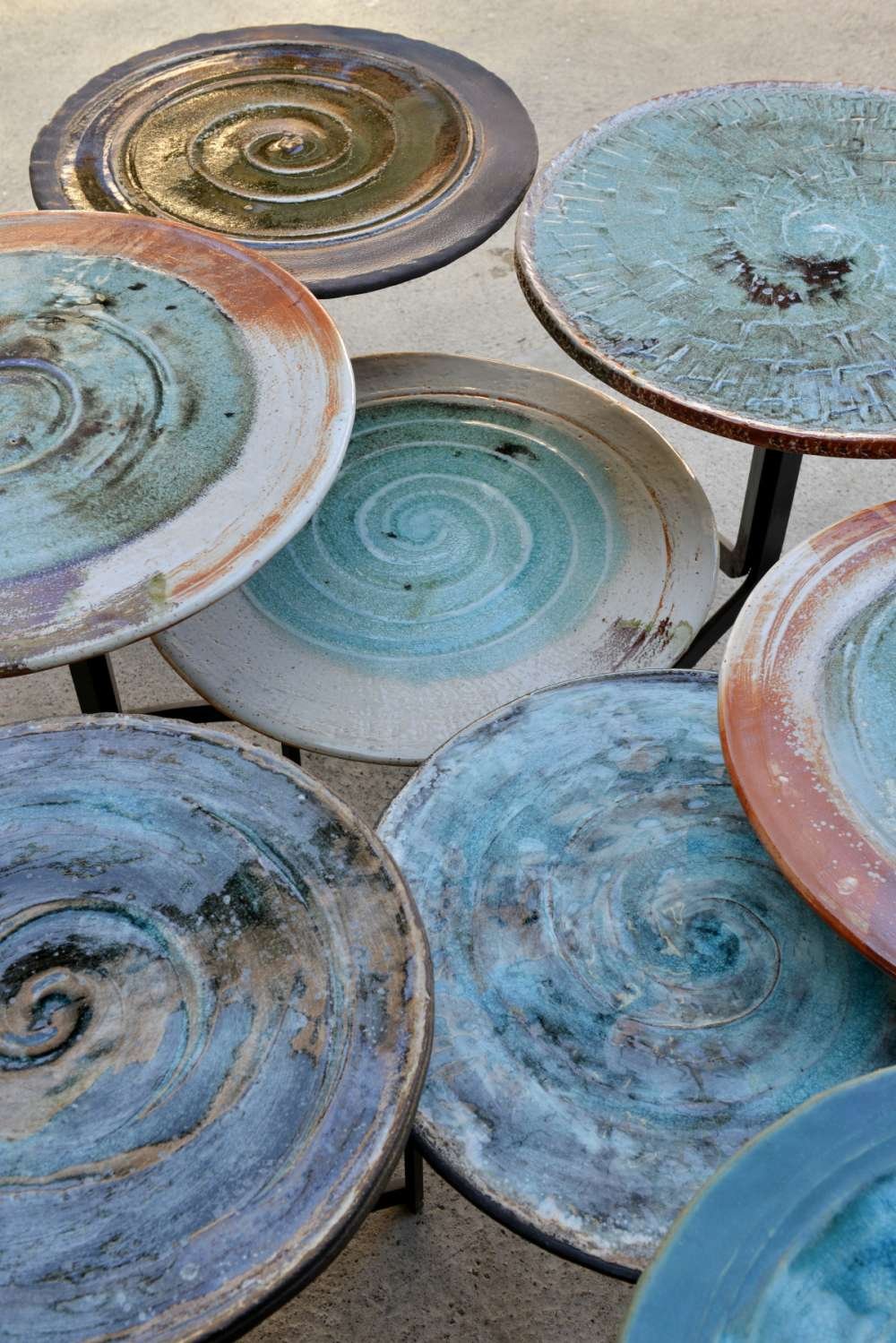Markus Klausmann
Life in the capsule
Straw, wood, coal, coke and salt, all put into a capsule together with turned or hand-built ceramics engobed with ochre and porcelain and then fired in a gas kiln: That is the secret of Markus Klausmann's fascinating fire-drawn vessels. Shino pieces are another focus of his work, along with porcelain with a "haptic touch", which is given its very special radiance by the addition of coarse clay substances.
Markus Klausmann
Friedhofstr. 20 (backyard)
79183 Waldkirch-Siensbach
Germany
+49 (0) 7681-23185
Markus Klausmann's main areas of work well explained:
Shino refers to a genre of ceramics that originated in Japan in the 16th century and is still highly prized today for its tactile and visual qualities.
Seladon refers to grey-green to blue-green thickly applied feldspar glazes whose special colouring comes from iron oxide.
The salt glaze is an approach glaze. While other glazes are applied before firing, the salt glaze is created during firing.
Engobe refers to a mixture of finely slurried clay liquefied with water, which is applied to raw or also bisqued ceramic workpieces for decoration.
It refers to firing in a closed container (capsule) of refractory material in which the ceramics are placed.
In fossil fuel furnaces fired with oil, gas, wood, coal or coke, the fire occurs in an open flame and reducing atmosphere.
Designation for a ceramic material made of feldspar, kaolin and quartz, with dense, light-coloured to white shards (term for a fired ceramic mass)
Designation for ceramics which, with or without glaze after the firing process above 1200° C, has a hard, solid and dense body (term for a fired ceramic mass).
In the context of the „Internationalen Keramiktage Oldenburg“ , the term "unique vessel" is associated with special, artistic vessels.
The term "utility ceramics" is used in the context of the "International Ceramics Days Oldenburg" to refer to handmade ceramics which, no matter what form they take, are primarily geared to function.




